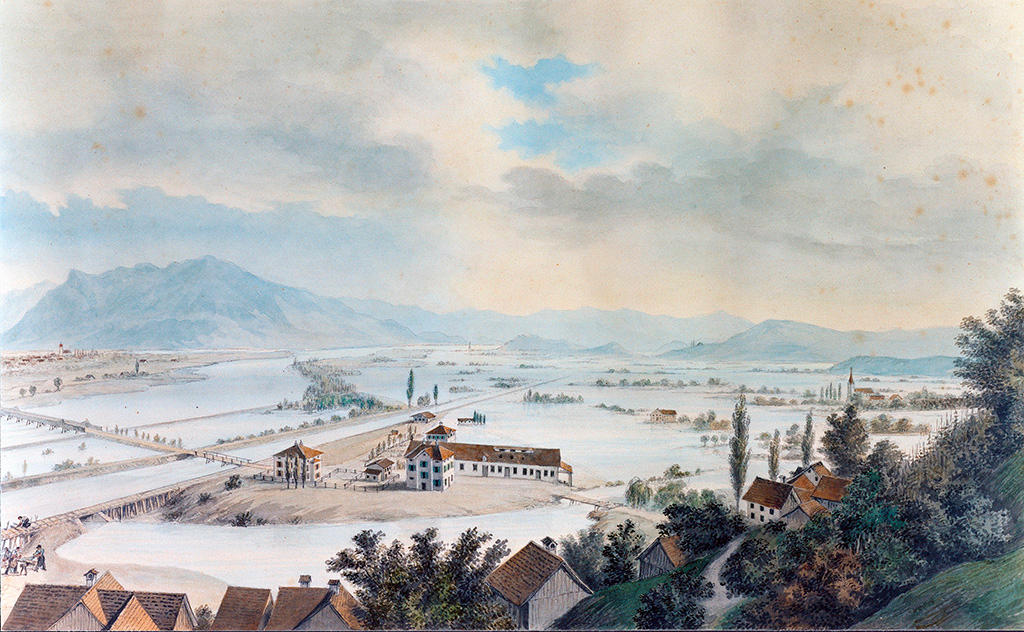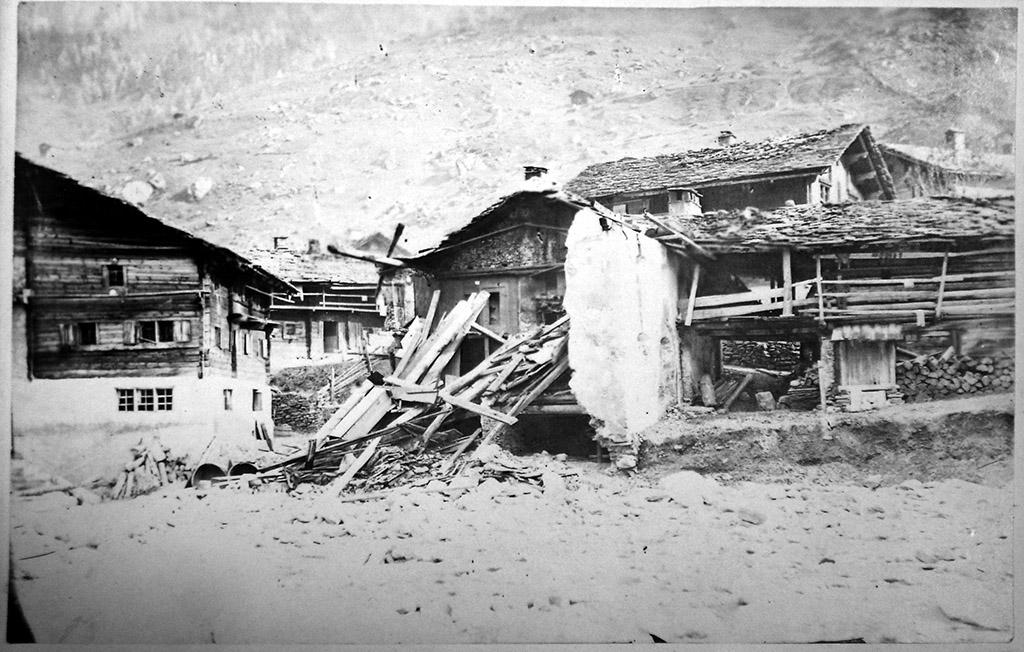
The natural catastrophe that changed Switzerland

Exactly 150 years ago, Switzerland’s lakes and rivers broke their banks, flooding many parts of the country. The catastrophe resulted in destruction and death, but it also brought the young federal state together and enabled it to advance.
It all began with heavy rain on September 27 and 28 and at the beginning of October. Autumn 1868 was one of the wettest – and most catastrophic – in Swiss history.
Lake Maggiore reached 199.98 metres, the highest ever measured and seven metres higher than its current average level, while the San Bernardino received 1,118 millimetres of rain in eight days, another record.
In the hardest-hit cantons – Ticino, Valais, Graubünden, Uri and St Gallen – the flooding caused 51 deaths. The damage came to around CHF40 million – almost CHF1 billion today.

The flood changed not only the landscape but also politics and society, says Stefan Brönnimann, a professor at the Geography Institute of the University of Bern and co-author of a publicationExternal link about the causes and consequences of the catastrophe of 1868.
At the time, flood protection was the job of the cantons, adds historian Stephanie Summermatter. “But faced with such an exceptional event, the federal government – still young [it had been created 20 years earlier] – decided to intervene. It’s the first time the cabinet took the initiative to deal with a catastrophe,” she says.
The government gathered an expert commission to assess the damage and launched a national campaign for donations. Under the slogan “One for all, all for one”, the collection raised CHF3.6 million and more than three tonnes of food – the most successful in Swiss history, Summermatter points out.
“The solidarity of the Swiss was enormous, which contributed to forging the national identity.”

The disaster 150 years ago also laid the foundations for the current policy of protection against catastrophes, Brönnimann says. Instead of just treating the symptoms, they began to tackle the causes, for example by building confinement barriers and protective measures along stretches of water. What’s more, the approach was no longer local but regional.
The government, which at the time got involved only in major river-rerouting projectsExternal link like the Rhine and the Rhone, assumed greater responsibility for flood protection, according to Summermatter.
Following this tragedy, laws and measures were adopted for the sustainable exploitation of forests and for the protection of inhabited areas, communication routes and major infrastructure.
Reconstructing events in the past enables us to learn lessons for the future, Brönnimann says. A future full of challenges and dangers: with climate change, the intensity of rainstorms will increase. But even so there’s some good news: according to Brönnimann, it’s unlikely that Switzerland will experience another disaster like the one in 1868.
The reconstruction of what happened in 1868 has allowed researchers to better understand the processes that cause flooding. Originally, there are of course heavy rains, but that’s not the only factor. The level of lakes and rivers, the saturation of soils in water, the melting of snow and the presence of dykes are other decisive factors. In the case of heavy rains, the containing role of forests is secondary.
All the conditions were fulfilled 150 years ago – a perfect storm: a rainy September had gorged the soil, exhausting its ability to store more water, and raised the levels of lakes and rivers. Floods, due to the large amounts of moisture transported from the Mediterranean to the Alps between late September and early October, were therefore unavoidable.
(Translated from Italian by Thomas Stephens)

In compliance with the JTI standards
More: SWI swissinfo.ch certified by the Journalism Trust Initiative


























You can find an overview of ongoing debates with our journalists here . Please join us!
If you want to start a conversation about a topic raised in this article or want to report factual errors, email us at english@swissinfo.ch.